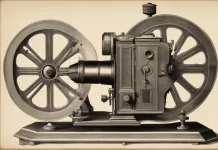The Light Innovation is a remarkable journey from fire-lit sources to highly efficient LEDs and smart lighting systems, reflecting humanity’s technological and societal advancements. Here’s a detailed, step-by-step look at key innovations in lighting technology, from the earliest forms to modern-day smart lighting. Light Innovation Step by Step 1st to Latest
1. Fire as the First Light Source (Prehistoric Times)
Humanity’s earliest light source was fire, used by prehistoric people to illuminate their surroundings, cook food, and ward off predators. Torches, candles made of animal fat, and oil lamps were the earliest forms of controlled fire for lighting. Animal fats were burned in stone or clay lamps, evolving gradually into oil lamps fueled by vegetable oil or whale oil.

2. The Introduction of Candles (Ancient Civilizations)
Candles became popular during the Roman era, made from tallow or beeswax and mounted on sticks. While not very bright, candles became a significant light source in homes and churches. Their production spread through Europe, Asia, and the Middle East over the centuries, eventually becoming essential in households.
3. Gas Lighting (Late 18th Century)
The Industrial Revolution brought gas lighting, transforming public spaces and enabling extended working hours in factories and homes. In 1792, William Murdoch pioneered gas lighting by using coal gas to illuminate his house. By the early 1800s, gas lamps were widely used in cities, lighting streets, and homes. However, gas lighting was costly and posed fire risks, limiting its use.
4. The Electric Arc Lamp (Early 19th Century)
In the early 1800s, Humphry Davy invented the first electric arc lamp by creating an electric arc between two carbon rods. Arc lamps were powerful but too bright for most indoor uses, so they were primarily used in street lighting, theaters, and industrial areas. These arc lights marked the beginning of electricity-based lighting, inspiring further innovation.
5. The Invention of the Incandescent Light Bulb (1879)
Thomas Edison and Joseph Swan independently developed commercially viable incandescent light bulbs in the late 19th century. Edison’s carbon-filament bulb was long-lasting and affordable, leading to widespread use. The incandescent bulb quickly replaced gas lighting in homes and factories, as it was safer, cleaner, and more practical.
6. Improvements in Incandescent Technology (Early 20th Century)
Over the years, incandescent bulbs were improved with tungsten filaments, introduced in 1904. Tungsten offered longer life and better efficiency than earlier carbon filaments. This innovation solidified the incandescent bulb as a staple in households and industries for nearly a century.
7. Introduction of Fluorescent Lighting (1930s-1940s)
Fluorescent lamps emerged in the 1930s, using a tube filled with mercury vapor and coated with phosphor. These bulbs produced more light and used less energy than incandescent bulbs. Due to their efficiency, fluorescent lights became popular in offices, schools, and commercial buildings, marking a major shift toward energy-saving lighting technology.
8. Compact Fluorescent Lamps (CFLs) (1980s)
In the 1980s, compact fluorescent lamps (CFLs) were introduced as an alternative to incandescent bulbs. CFLs used about 70-80% less energy than incandescents and lasted up to 10 times longer. Despite their higher upfront cost, CFLs gained popularity as energy-efficient household lighting, especially as environmental awareness increased.
9. Introduction of Light-Emitting Diodes (LEDs) (1960s-2000s)
LED technology, developed in the 1960s, originally produced only red light and was used in electronic displays. In the 1990s, researchers created blue LEDs, allowing the creation of white light when combined with other colors. By the early 2000s, LEDs became a viable option for general lighting due to their durability, low energy consumption, and long lifespan.
10. Energy-Efficient Lighting Regulations (2000s)
As environmental concerns grew, countries introduced regulations phasing out incandescent bulbs in favor of more energy-efficient options like CFLs and LEDs. The European Union and the United States implemented measures to encourage the transition, leading to a decline in incandescent usage and a boost in LED adoption.
11. Widespread LED Adoption (2010s)
By the 2010s, advancements in LED technology made it the preferred choice for home and commercial lighting. LEDs used 80-90% less energy than incandescent bulbs and had a much longer lifespan. The prices of LEDs fell significantly, making them accessible to a broad range of consumers, and they rapidly became the standard in most households.
12. Smart Lighting Systems (2010s-Present)
With the rise of the Internet of Things (IoT), smart lighting systems became a new frontier in lighting technology. Companies like Philips and LIFX introduced smart bulbs that could be controlled remotely via smartphones or voice assistants. These lights allow users to adjust brightness, color, and scheduling, and are compatible with platforms like Amazon Alexa and Google Assistant.
13. Human-Centric and Circadian Lighting (Present)
Human-centric lighting emerged as an innovation to support well-being by mimicking natural light patterns. These lights adjust their color temperature and brightness throughout the day to align with human circadian rhythms. This approach, used in both homes and workplaces, aims to enhance productivity, mood, and sleep quality.
14. Solar-Powered and Sustainable Lighting Solutions (Present)
Sustainability has become a major focus in lighting design, leading to the development of solar-powered and recyclable lighting products. Solar lights are widely used in outdoor and off-grid applications, especially in developing regions with limited access to electricity. Sustainable materials and eco-friendly designs are now increasingly popular in lighting products, meeting consumer demand for green options.
15. The Future of Lighting: Advanced LEDs and AI Integration
Looking forward, lighting technology will continue to innovate, with LEDs advancing toward even greater energy efficiency and longevity. AI integration may enable lighting systems to adjust automatically based on environmental cues or user behavior, further enhancing energy savings. Additionally, the development of OLEDs (organic LEDs) and quantum dot LEDs offers the potential for thinner, more flexible, and vibrant lighting solutions.
Conclusion
The evolution of lighting, from fire to intelligent, energy-efficient systems, mirrors humanity’s progress in science and environmental awareness. Each major advancement, from the incandescent bulb to LEDs and smart lighting, has improved efficiency, accessibility, and the overall quality of life. As technology advances, lighting will likely continue to integrate with our daily lives, evolving to meet both functional needs and environmental goals.






